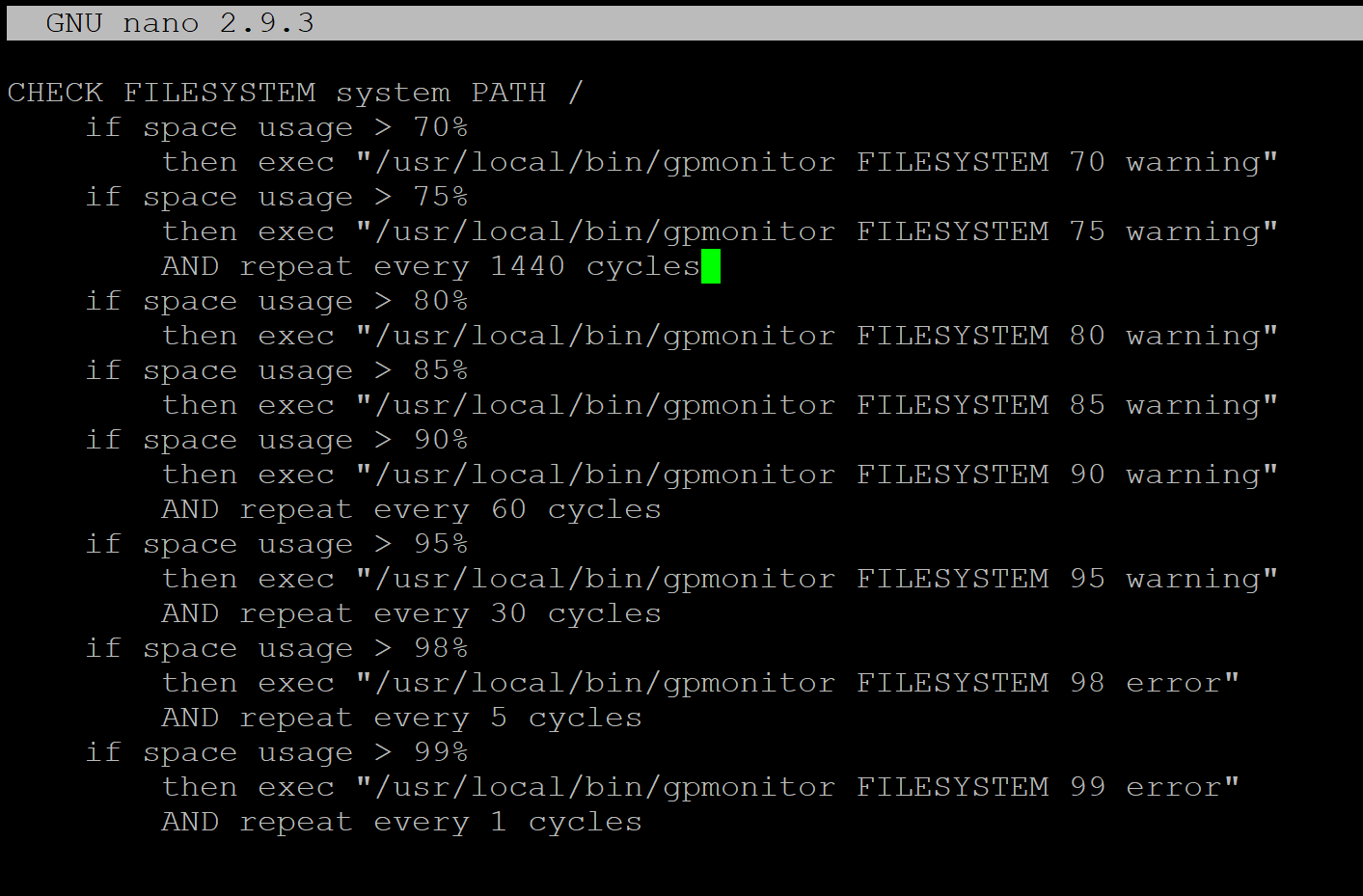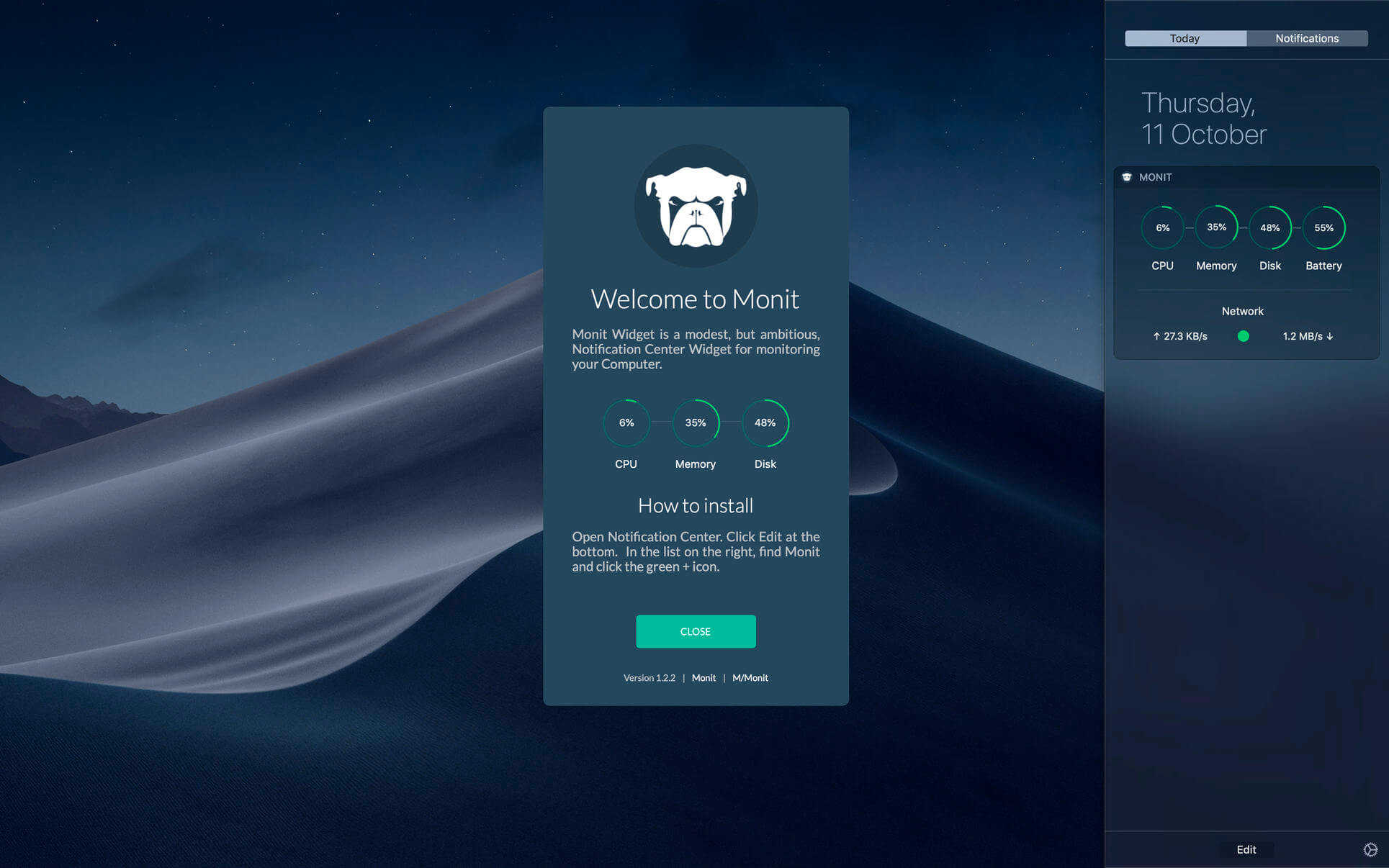
Nginx is now ready to be monitored by our cute monitoring Monit.
Monit file install#
So let us install it then add configuration that will monitor its status. Once we have Monit running, it will do us no good if we do not add the services we are interested in for it to monitor and restart whenever they fail. Pages like below will ensue.įirst time log in Step 4: Add services for Monit to monitor
Monit file password#
sudo firewall-cmd -permanent -add-port=2812/tcpĪfter you have fired up monit, point your browser to and log in with the username “ admin” and password “ monit” when prompted. #use address localhost => only accept connection from localhost (drop if you use M/Monit)ĭo not forget to open port 2812 once you are done editing. Look for the section in the snippet below and change the IP from localhost to 0.0.0.0 which will allow you to access the web interface from all IPs that can reach your server. The file is setup to start Monit’s http server so you have something interesting to look at from the comfort of your browser. Monit will use the monitrc control file located in /etc/monitrc directory for it’s configuration. └─83433 /usr/bin/monit -I Step 3: Monit configurationĪs you would expect, Monit comes with a configuration that enables you to fine tune your configuration and to also add what we need to monitor. Loaded: loaded (/usr/lib/systemd/system/rvice enabled vendor preset: disabled)Īctive: active (running) since Wed 20:27:05 UTC 2min 4s ago rvice - Pro-active monitoring utility for unix systems.You can as well enable Monit to start when the server restarts $ sudo systemctl enable -now monit Starting Monit 5.26.0 daemon with http interface at :2812 Find Monit’s statusĪfter firing up Monit, you can find out how it is faring by running the status command as follows: $ sudo monit statusĪn accompanying screenshot is shared below for a clearer picture. #You should see the message below in the end#


Starting Monit is as simple as running one command. Sudo dnf -y install zlib-devel pam-devel openssl-devel libtool bison flex autoconf gcc make git epel-release Step 2: Install MonitĪfter the dependencies and applications we need have been settled in, let us put our repositories to good use by fetching it and installing it via DNF.
Monit file update#
Step 1: Update and install necessary packagesīefore we enjoy the delight of Monit, we shall make sure all dependencies have been met by installing the following important packages.
Monit file code#
We shall fetch the code and install it via epel-repository. Hoping the rendition about this tool suffices, we can go ahead and set it up in our server so that we can see first hand the benefits that accrues once it starts working behind the scenes. In addition, your PATH must contain basic build tools such as make.
Monit file software#
The GNU C compiler (GCC) from the Free Software Foundation (FSF) is recommended.

This is also useful for security reasons – you can monitor the md5 or sha1 checksum of files that should not change and get an alert or perform an action if they should change. Monit can monitor these items for changes, such as timestamps changes, checksum changes or size changes.


 0 kommentar(er)
0 kommentar(er)
